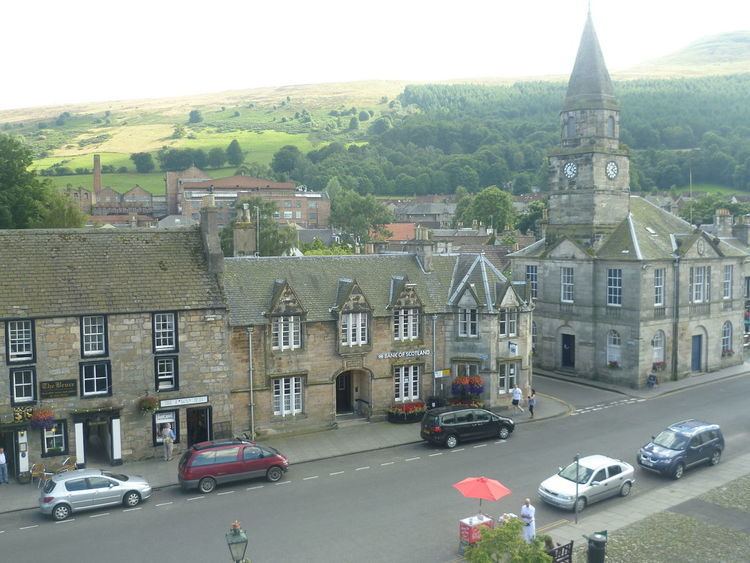Population 1,160 Post town Cupar Local time Sunday 11:32 AM | OS grid reference NO253077 Sovereign state United Kingdom Postcode district KY Dialling code 01337 Lieutenancy area Fife | |
 | ||
Weather 13°C, Wind SW at 18 km/h, 74% Humidity | ||
Falkland (Scottish Gaelic: Fàclann) is a village, parish and former royal burgh in Fife, Scotland at the foot of the Lomond Hills. According to the 2008 population estimate, it has a population of 1,180.
Contents
Map of Falkland, Cupar, UK
The Falkland Islands in the South Atlantic are named after Anthony Cary, 5th Viscount of Falkland.
Etymology
The earliest forms of this name include Falleland (c. 1128) and Falecklen (c. 1160), with the second element being Gaelic lann ("enclosure"), but the exact etymology is unclear since the first element could be falach ("hidden"), failc ("wash"), and falc ("heavy rain"). The later folk etymologies "falcon land" and "folkland" are not plausible.
In the Middle Ages, the name Falkland only applied to the Castle; the burgh and parish were known as Kilgour, which may mean "church/cell of Gabrán".
History
A settlement is believed to have existed at Falkland prior to the 12th century. However, this was not until the erection of Falkland Castle some time after 1160 which was the crucial factor in the birth of the village. The site of Falkland Castle now lies within the grounds of the present Falkland Palace. The donation of the royal hunting estate of Falkland by King Malcolm to Duncan, Earl of Fife in 1160, may actually have led to any previous hunting lodge being replaced by the castle.
Despite being granted royal burgh status in 1458, Falkland had developed as a medieval settlement dependent on Falkland Palace and the Falkland Castle and therefore did not function in the same way as other royal burghs did.
Falkland was the birthplace of the famous 17th century Covenanter Richard Cameron who was the town schoolmaster before he became a field preacher. His house still stands in the main street of the village. The American country and western singer Johnny Cash traced part of his family ancestry to this district of Fife.
A considerable proportion of the village (including the Palace) was restored by John, Marquis of Bute who inherited much of the land in the late 19th century. He employed the architects John Kinross and Robert Weir Schultz to undertake the works required.
Landmarks
Scotland's first conservation village is best known as the location of Falkland Palace, begun in 1500 by James IV, and the best example of French-influenced Renaissance architecture in the United Kingdom. The palace was built to accommodate the royal court when they came to Falkland to hunt in the nearby forests; Mary, Queen of Scots, was a frequent visitor.
As at Holyrood Palace in Edinburgh, a fire broke out during the occupation of the buildings by Oliver Cromwell's troops in 1654. The fire destroyed the East Range. The Court never returned to Falkland Palace after 1665 and until the 19th century the village and palace were neglected. In the late 19th century extensive rebuilding and restoration work began. Today the palace and gardens are open to the public through the National Trust for Scotland.
Culture
Other features of the village include an old horse market, also including the Falkland Cricket Club, and the Falkland Golf Club. One of the country's leading environmental festivals, The Big Tent, is held in the grounds of Falkland Estate in July. Organised by the Falkland Centre for Stewardship the 2012 festival was headlined by the Proclaimers and the 2010 event by Rosanne Cash.
Falkland's recent success in British and international horticultural competitions includes a gold medal win in the RHS Britain in Bloom large village category, receipt of Britain in Bloom's Champion of Champions award two years running (2009-2010) and success in the British village category of the European Entente Florale.
Film
In October 2013 filming for the US science fiction series 'Outlander' transformed the village in appearance to film scenes set in the second world war.
